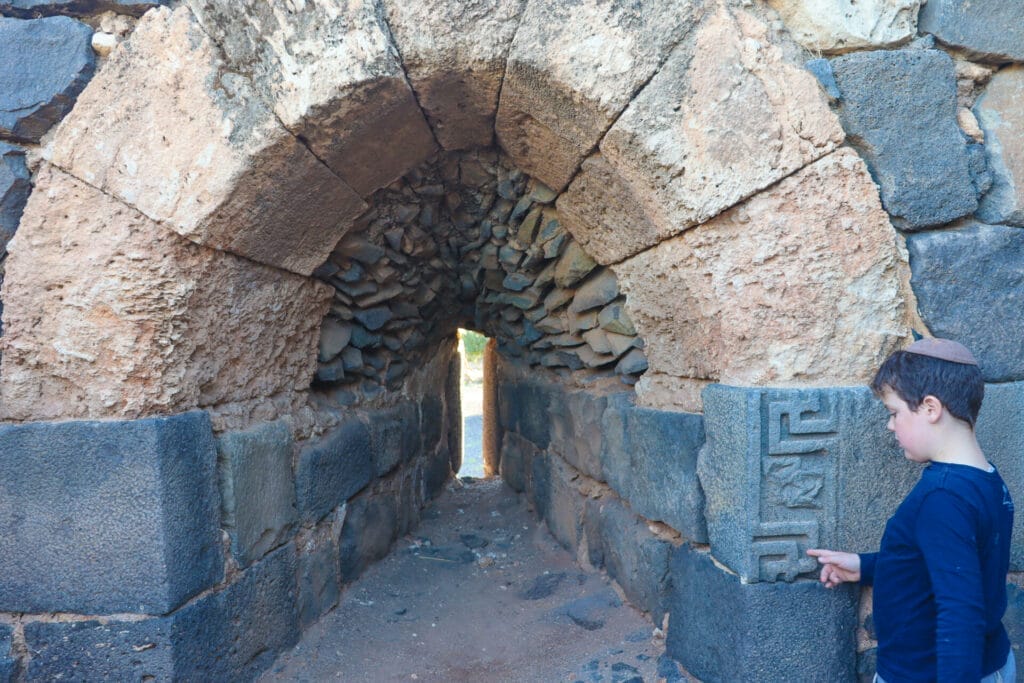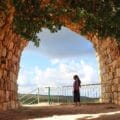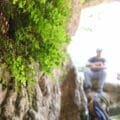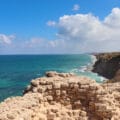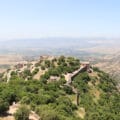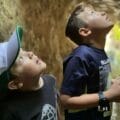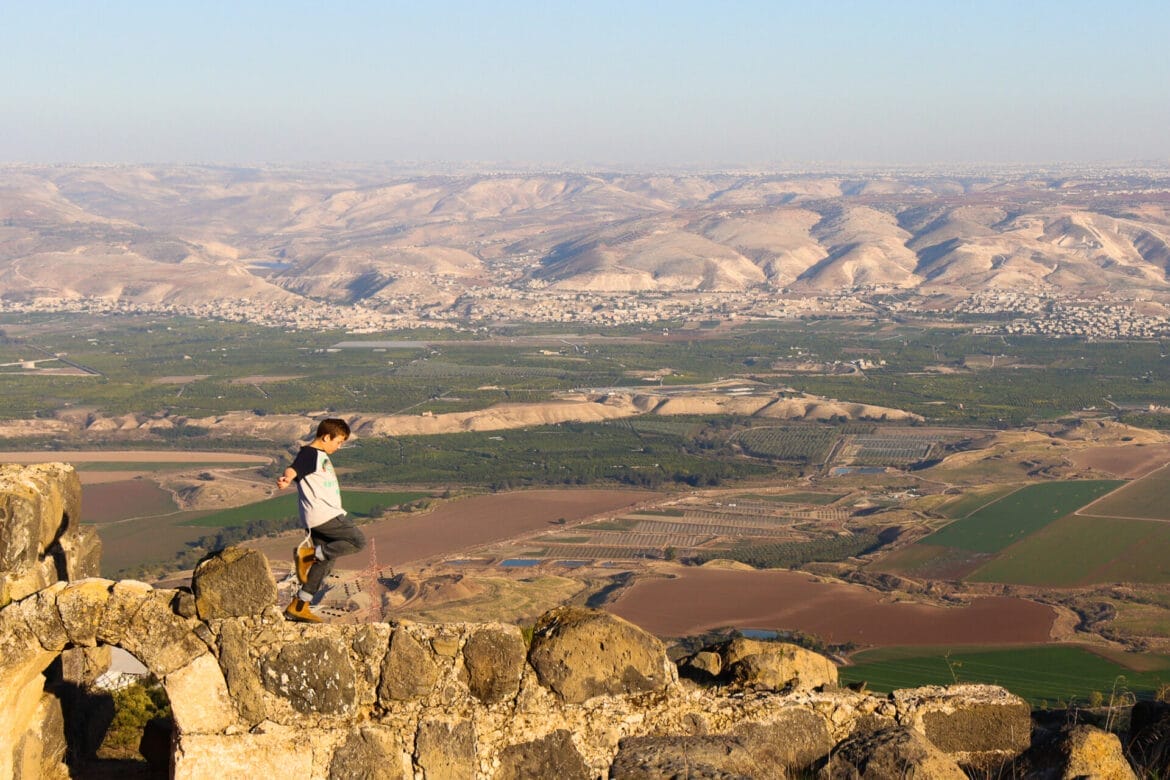
| Distance: 1km | Time: 1 hour | Difficulty: Easy |
Click here to go straight to hike notes.
On a recent trip to the Jordan Valley, we had the opportunity to (finally!) visit Belvoir Fortress, otherwise known as Kochav HaYarden (or Jordan Star in English). This castle in a national park is one of the most impressive fortresses in Israel. It sits upon layers upon layers of ancient settlements, with records of local settlement dating as far back as the 12th century BCE, to the time when the Israelites ruled the land.
Over the years, a lot happened at Belvoir. Because of its proximity to freshwater springs (one spring sits right next to the fortress), the resulting fertile land has drawn people to this spot throughout the ages. Thanks to its strategic location high above the Jordan Valley (about 550 meters), the fortress also boasts fantastic views out to the surrounding area.

You can hike to the Kochav HaYarden fortress too. On our visit with the kids, we just walked the 1.2 kilometer footpath in and around the fortress. But next time we visit (without the kids), we’ll climb up the mountain to the top of Belvoir.
Our kids were completely taken with Belvoir Fortress. The spectacular views were something that people of any age could appreciate. And they loved exploring every nook and cranny of the fortress, from the moat to the ancient kitchen. It was a perfect late afternoon activity.
Here’s how we visited Kochav HaYarden National Park, otherwise known as Belvoir:
It’s a Great Day for a Castle
We had just finished up an amazing morning at Gan HaShlosha, about 20 minutes south of Kochav HaYarden. All of us were excited for another chilled out adventure at Kochav HaYarden in the late hours of that winter afternoon.
We stopped by the entrance booth with our Parks Card and parked the car. Maps in hand, we were ready to see what Belvoir fortress was all about.
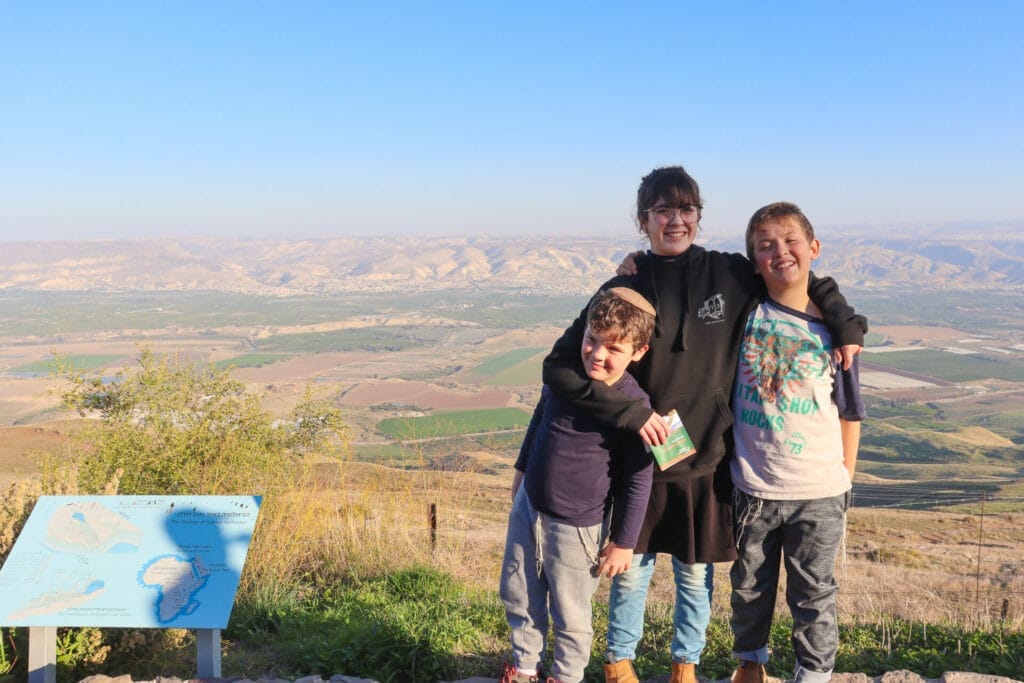
The map outlined an easy to follow path, one that maximized the gorgeous views and toured the innermost depths of the fortress. We followed the trail towards the entrance to the fortress, stopping when we reached a jaw-dropping view.
What’s in a View?
From our perch atop Belvoir, we could see the rolling hills of Jordan, the Sea of Galilee, and the entire Jordan Valley. We were able to pinpoint the Jordan River, snaking through. The lookout was impressive.
The nearby signs explained the geological phenomena that resulted in such a spectacular view. We were standing right above the Syrian-African rift line, where plate tectonic shifts resulted in different rock formations on either side of the valley.
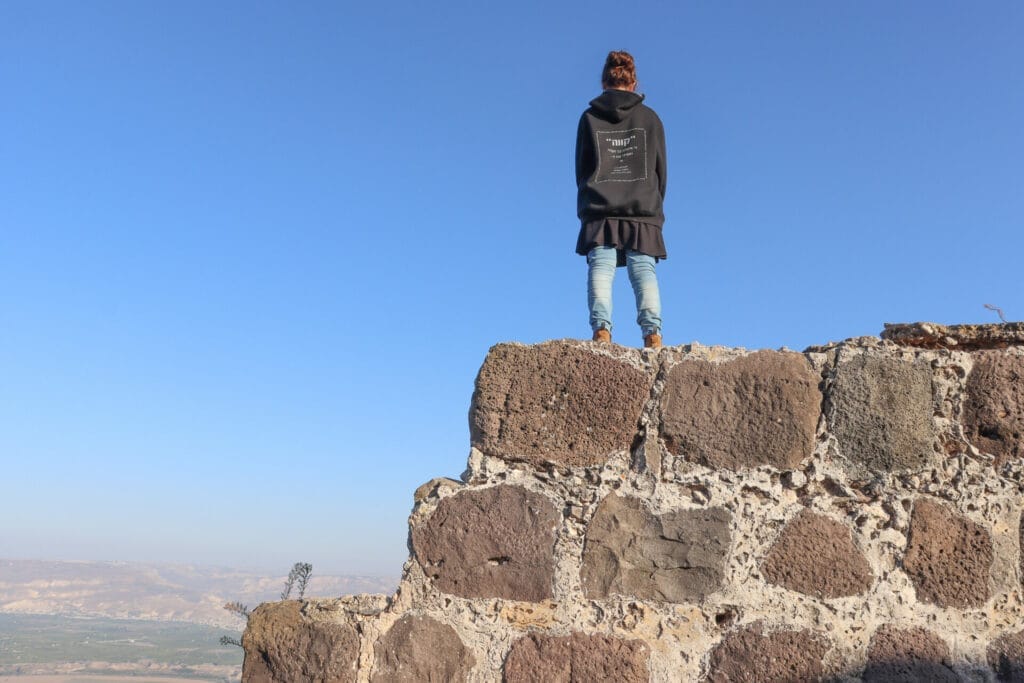
Our side was made of basalt rock, similar to what one sees in the Golan heights. According to the sign, on the other side of the valley, the rolling Jordanian mountains were made up of limestone and lake sediment.
Whatever those hills were made up of, the view was magnificently beautiful.
Into the Fortress!
We continued along, into the fortress, following ancient stones that formed an impenetrable structure, built by Hospitaller Knights in the 12th century. Some of the stones had been reclaimed by the Crusaders from previous settlements at Kochav HaYarden, most notably the Mishnaic settlement of Kochava which housed a synagogue and other public buildings. When Belvoir fortress was recently excavated, a stone carved with a seven branch menorah was found. (This stone is now located in the Israel Museum.)

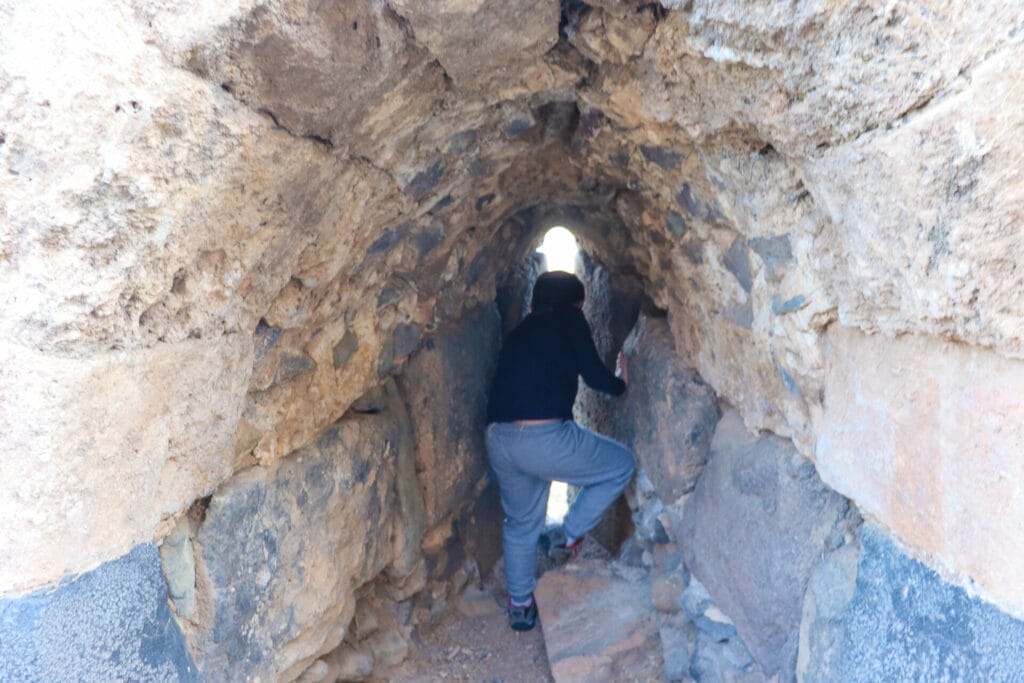
We passed by archways and narrow arrow slit windows, used for defending the castle. And soon we found ourselves atop a stone wall, staring out at the view once again.
In the distance we could see Sartava Mountain. It’s worth noting that Kochav HaYarden is sometimes identified as Grifina, one of the ancient peaks that were once used to light beacons to announce the arrival of the new moon (just like Sartava).
Exploring the Castle
From here, we dove into the depths of the castle, stopping to read informative signs along the way. We learned about the noble French family who once owned this land (giving the place the name Belvoir, which means “beautiful view” in French). And we read about how the Crusaders who purchased the land used the fortress to keep watch, since it was located above the road from Beit She’an to Damascus and at the cross point into Jordan.
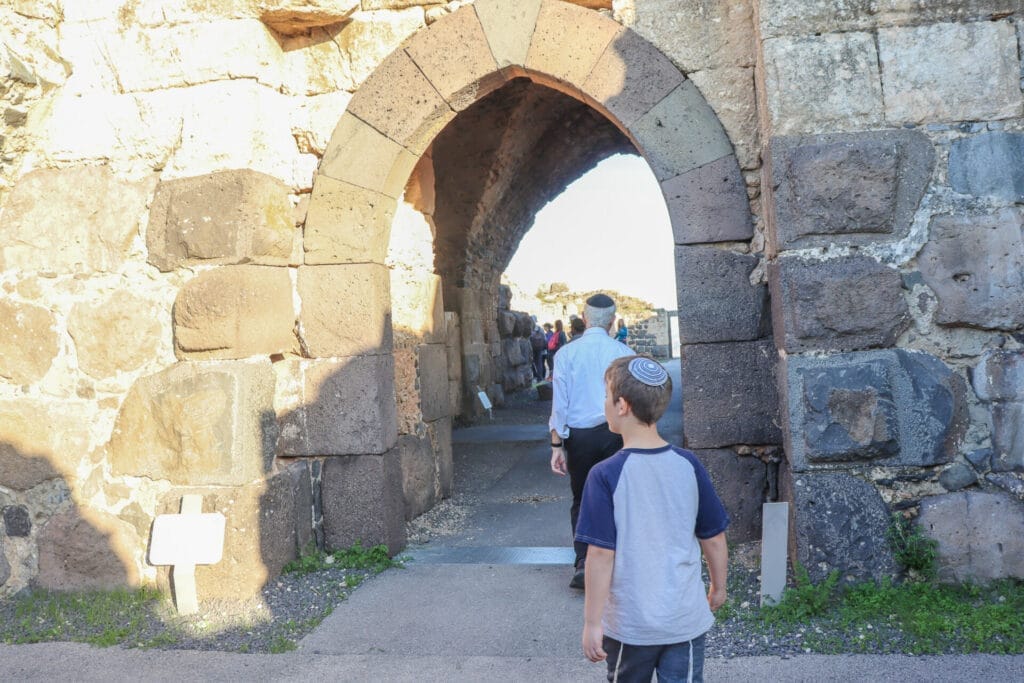
As far as my kids were concerned, there were more interesting things to note about Belvoir: like the sheer number of arrow slit windows and the many stone walls to climb.
Eventually, we found ourselves at the fortress within the fortress. Belvoir was so strong and so well defended that there was a safe room located on the inside. Since the remnants are remarkably intact, it was easy to imagine a battle at the fortress, archers keeping attackers at bay through the slot windows, protecting the people within.
Thanks to its strategic architectural plan, Belvoir fortress was never actually conquered. When Saladin’s army attacked in the late 12th century, they were able to penetrate the outer wall of the fortress, but the Christian crusaders were still entrenched in other parts of the structure. Since both sides were exhausted from lengthy battle, Saladin’s men agreed to let the Christians escape to nearby Tyre in exchange for their surrender of Belvoir.
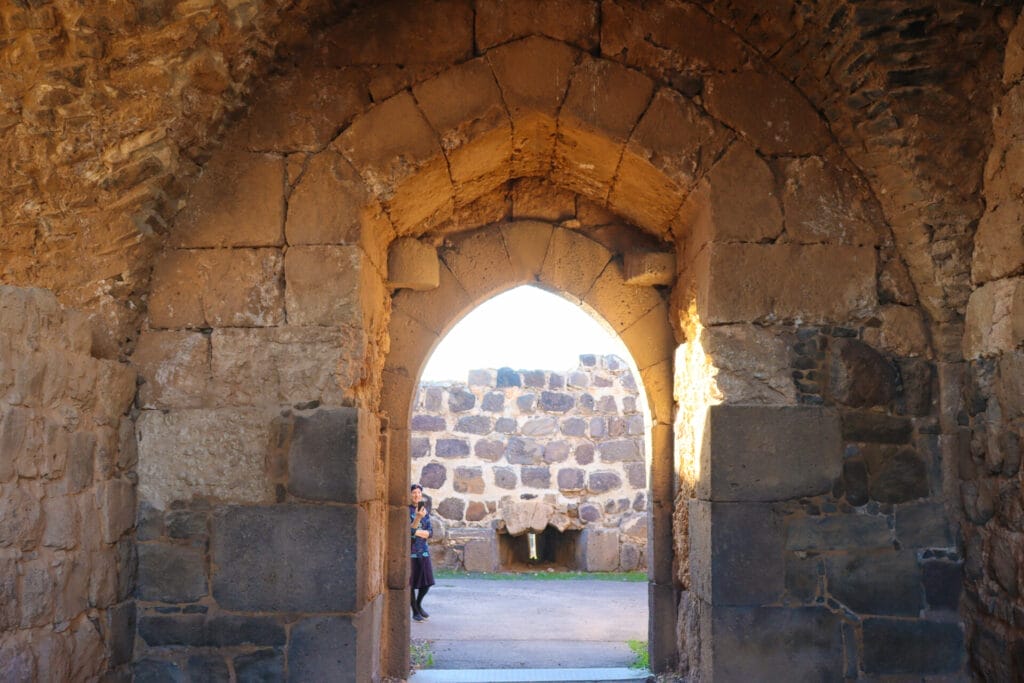
Into a Moat and Saying Goodbye
After exploring every nook and cranny of Belvoir, we made one last stop on the way out: the moat. After climbing down a ridiculously steep set of stairs, we found ourselves in between two walls, in a grassy area that once served as a protective barrier, barring entry from unwanted visitors.
I’m not sure what this moat really looked like in times past, but we imagined it filled with crocodiles, an added layer of defense to an already impenetrable fortress.
From here, we continue to follow the path back in the direction of the park’s entrance. It was 4:00 PM: closing time during the winter months. Our exploration of Kochav HaYarden National Park was complete.
This impressive gem above the Jordan valley is worth visiting for so many reasons. With gorgeous views and a rich history, the Belvoir castle is one of the most beautiful fortresses of its kind in all of Israel.
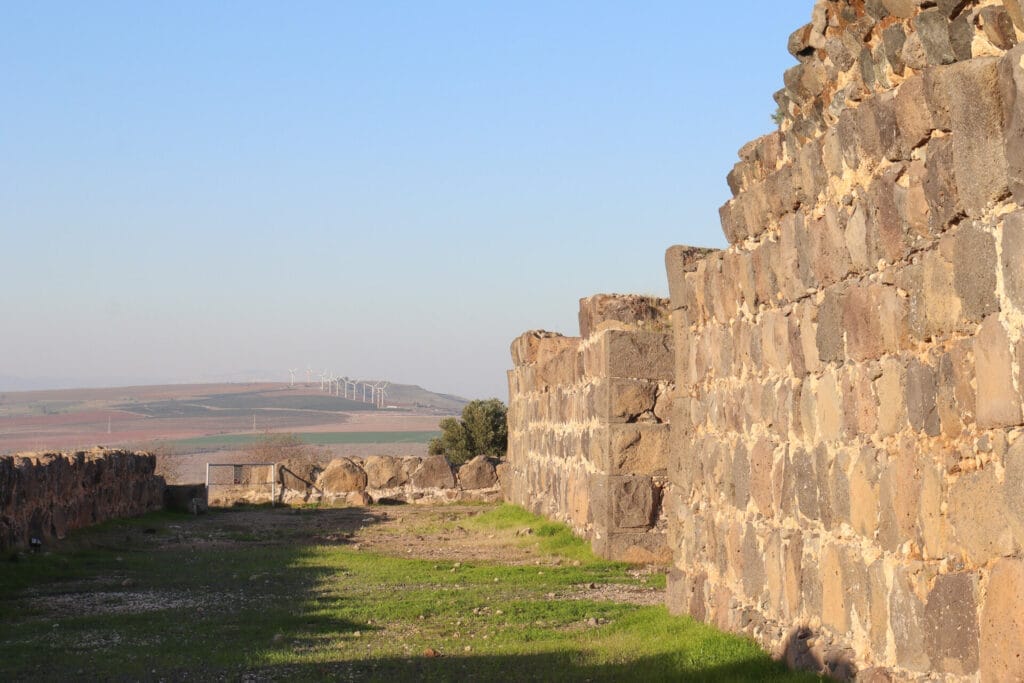
Hikers’ Notes:
- This is an all season walk.
- Kochav HaYarden is a national park with an entrance fee (22 per adult and 9 per child or use your Parks Card). There are facilities and a store at the site. You can reserve your spot at
- Great for kids.
- Wear comfortable walking shoes to explore this park.
- To follow the path, pick up a map of the park at the entrance booth. Then follow the trail marked on the map around and through the fortress.
Don’t forget to read my guide to the navigational features in this post before you hit the trail!
Trail map from Amud Anan.
Questions? Have you been to Kochav HaYarden National Park? Let’s hear about it in the comments!
